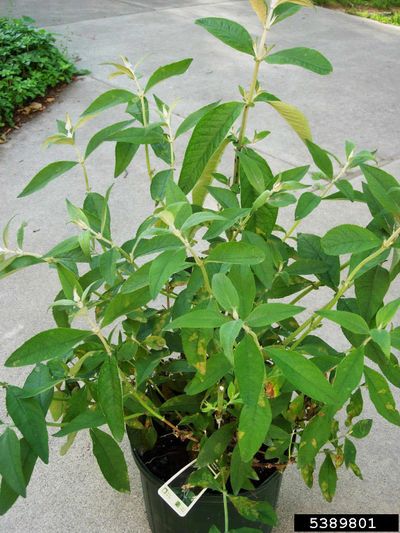Butterfly Bush Diseases
Downy mildew is a relatively common problem that can occur when temperatures are cool and the plant’s leaves are wet for a long period of time. It looks just like the name suggests, with furry patches of mildew appearing on the undersides of leaves. The opposite sides of the leaves don’t grow mildew, but they may turn yellow or brown, and the whole leaf may become misshapen. The best way to prevent it is to keep the bushes far apart for airflow and to keep the ground around them clear of leaves. If you already have mildew, remove any really infested plants or branches and spray with fungicide. Another one of the common butterfly bush diseases is rhizoctonia, a fungal root rot that makes leaves yellow and drop and destroys the roots. It’s hard to totally wipe out rhizoctonia, but applying fungicide to the soil can help. One more of the buddleia diseases is phytophthora, another fungal root rot. It’s noticeable above ground by yellowing leaves, smaller than usual flowers, and stems rotting on the plant. Underground, the outer layers of the roots rot away. Phytophthora can sometimes be treated by the application of fungicide, though sometimes even with treatment the plant will die. Treating diseases of butterfly bush is more a means of prevention than anything else. Typically, if grown in suitable locations with well-draining soil and plenty of air circulation, most issues with these shrubs can be alleviated right from the get-go.
